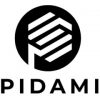
The New Normal Trend for Cosmetics Manufacturer
The cosmetics industry has continually been expanding and become one of the world’s profitable industries. The value of global cosmetics industry grew considerably from 483 billion dollars in 2020 to 511 billion dollars in 2021, with an annual growth rate of 4.75% despite the covid-19 crisis (Robert, 2021) while the value of Thailand’s cosmetics market was around 2.51 hundred thousand million baht in 2017 (Kasikorn Bank, 2018).
The beauty industry can thrive on a newness and customer-centric model. According to CB Insights’ Industry Analyst Consensus (2020), leading brands are developing and changing Beauty Device to Smart Beauty Device by connecting beauty systems for personalized skincare treatments, collecting customers’ behavioral data, as well as encouraging customer’s loyalty. An example is a skincare system integrated application that leverages AI.
Another trend is that cosmetics brands understand and has more focus on the “niche” and “underserved” market such as men’s personal care products, gender-neutral products and products for specific demographic categories.
As a result, brands offer “Inclusive Services” which is a product development process for all backgrounds and skin tones, including using visual assets to represent diversity.
Lastly, cosmetics brands corporate more closely with local farmers for transparent ingredient sourcing. Besides this, sustainable packaging is one of the important key factors in business competition.
As a result, cosmetics companies are increasingly investing in sustainable development, recycling technologies and eco-friendly production processes.
So, it can be seen that the selection of good cosmetics manufacturers and understanding of the process works are very critical in running successful cosmetics.
The first step is that the manufacturer needs to know what kind of product the customers want in order to have great ideas on how products should be created because the most customized preference will assist customers to differentiate themselves in the marketplace.
Moreover, the right cosmetics manufacturer should have enough experience to turn customer’s ideas into a tangible, effective, and marketable product and should be able to offer customers a full, streamlined service by creating innovative, high-quality products. Thus, the customers first need to have some specific and important information on hand such as demanded product formula, cosmetics packaging designs, ingredient quality selection, etc. Additionally, the minimum order quantity (MOQ), wholesale price, conditions and amount of liability insurance manufacturer offer, the time frame on initial orders are essential to consider and decide whether the customers can work with the manufacturer, given their budget.
The last step is creating and launching a private label of new products into the market which is a big step that can make the company become successful.
References
Anthem, 2020. How to choose the right skincare manufacturer. [Online]
Available at: https://www.anthemusb.com/choosing-skincare-manufacturer/
[Accessed 1 May 2021].
Bank, K., 2018. Beauty Market is still good. Stay on trend in business to make money.. [Online]
Available at: https://kasikornbank.com/th/business/sme/KSMEKnowledge/article/KSMEAnalysis/Pages/Beauty-Business_Trend.aspx
[Accessed 1 May 2021].
Insights, C., 2020. 15 Trends Changing The Face Of The Beauty Industry In 2020. [Online]
Available at: https://www.cbinsights.com/research/report/beauty-trends-2019/
[Accessed 1 May 2021].
Mint, C. D., 2020. How to choose the right manufacturer for your beauty product?. [Online]
Available at: https://cremedemint.com/blog/design/choose-a-manufacturer-for-your-beauty-product/
[Accessed 1 May 2021].
Roberts, R., 2021. 2021 Beauty Industry Trends & Cosmetics Marketing: Statistics and Strategies for Your Ecommerce Growth. [Online]
Available at: https://commonthreadco.com/blogs/coachs-corner/beauty-industry-cosmetics-marketing-ecommerce
[Accessed 1 May 2021].

